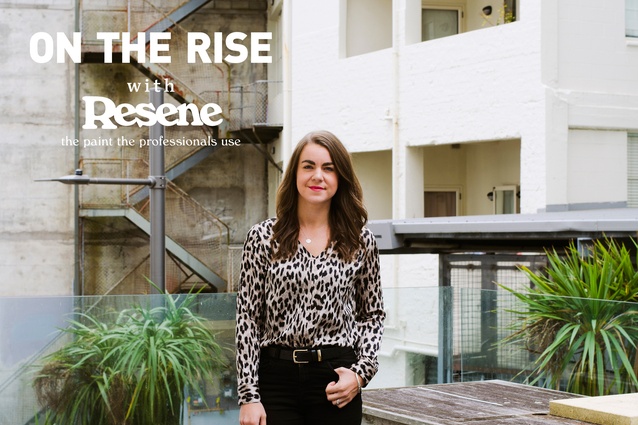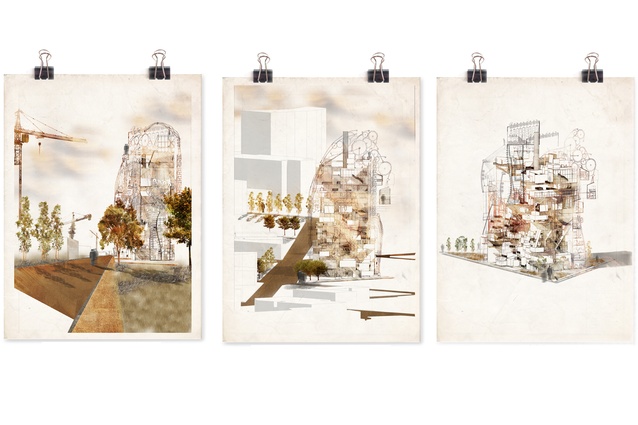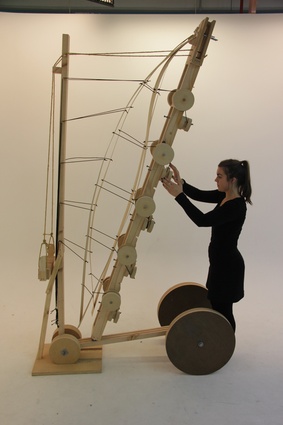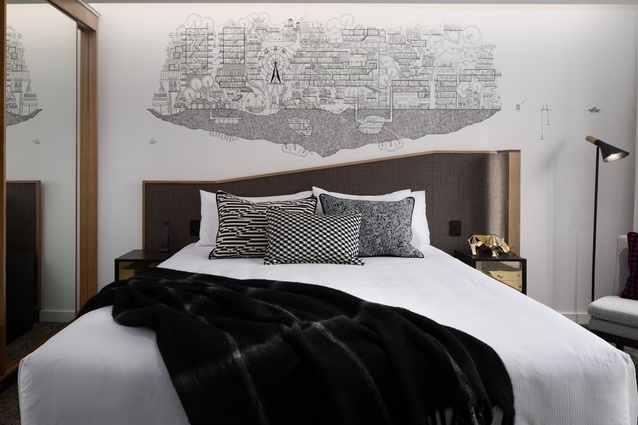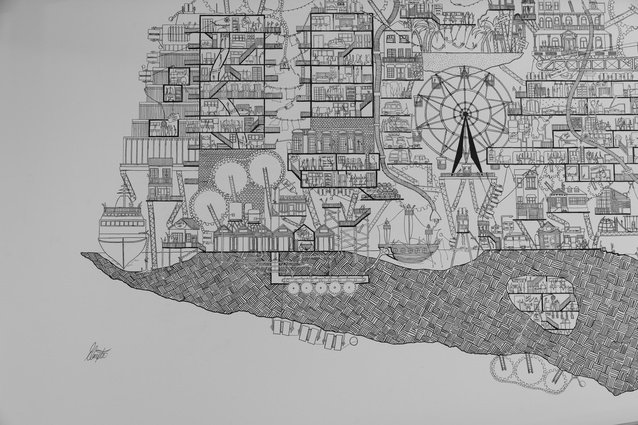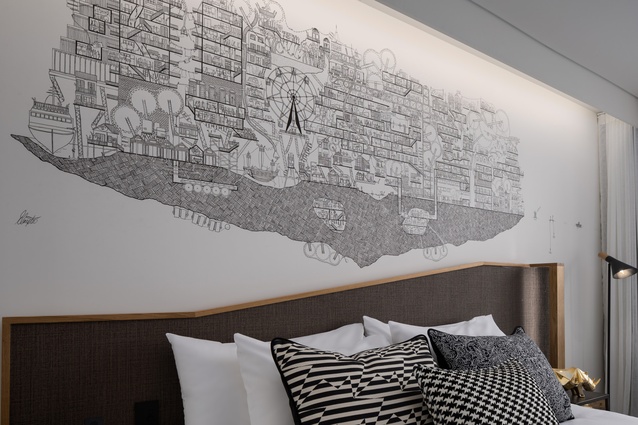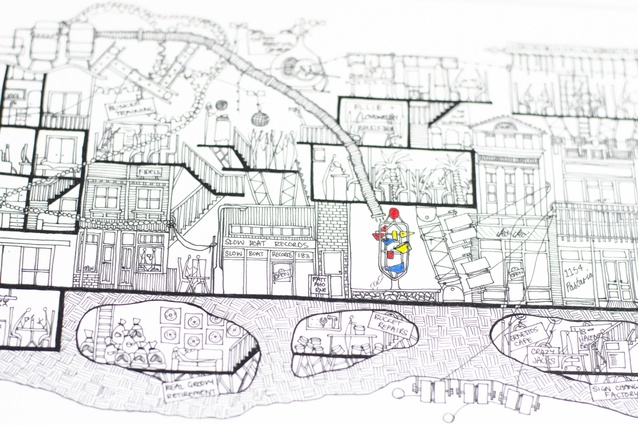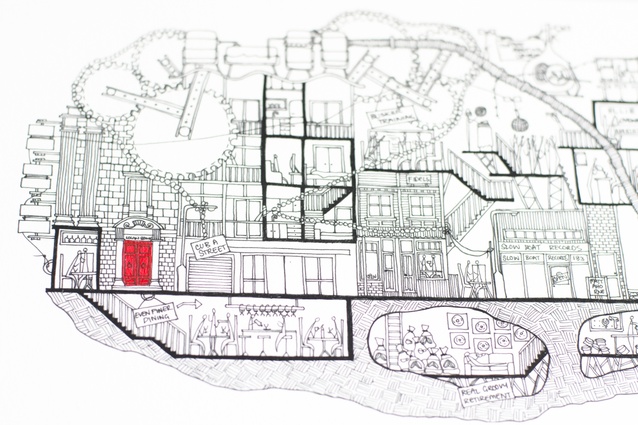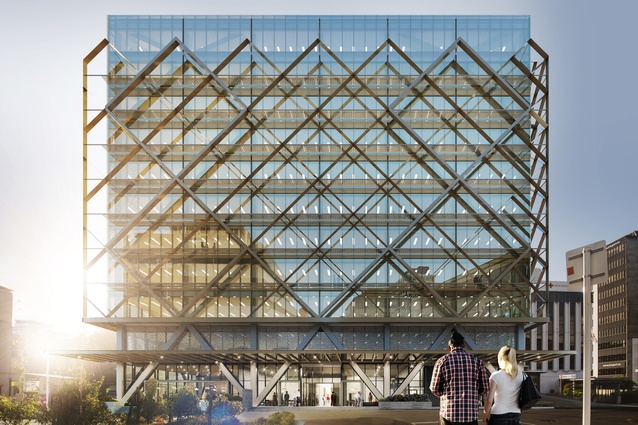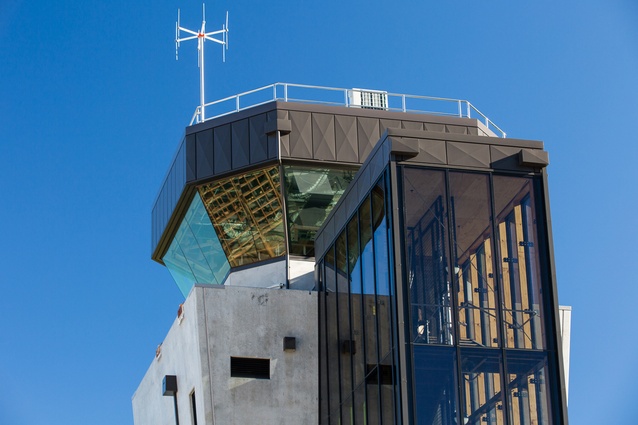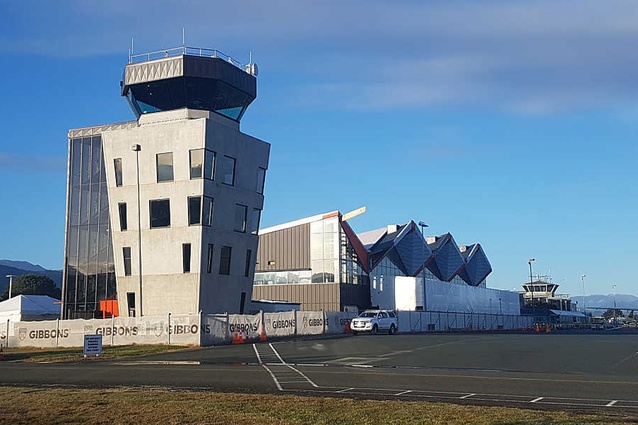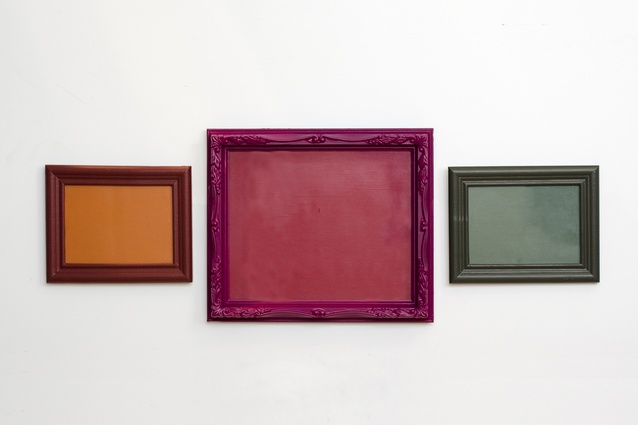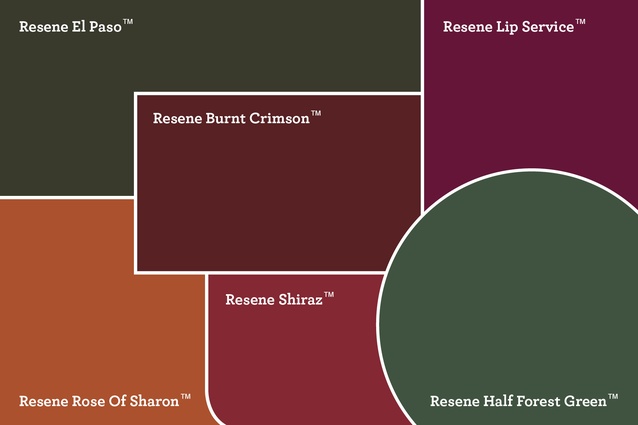On the Rise: Ellie Compton
On the Rise with Resene showcases young designers who are making their mark on the industry from across Aotearoa. For the 13th in the series, Ashley Cusick speaks to Ellie Compton. Ellie is a graduate at Jerram Tocker Barron Architects in Wellington as well as an artist, creating a unique brand of narrative, architectural drawings.
Ashley Cusick (AC): When did you first become interested in architecture?
Ellie Compton (EC): I guess it was always something I wanted to do. It was that cliché story: when I was the age of nine, I knew I wanted to be an architect. It is kind of cool; I feel really blessed that I’ve known what I wanted to do for ages. Otherwise, I’ve just always really loved the creative world.
AC: Did you have any other architects or creative people around you when you were growing up?
EC: Mom and dad were quite creative, but Dad was a builder, so that maybe was part of it. Mostly, it was just one of those things. I still have – you know how parents keep things – I’ve got maths books where I used to map out in the squares certain rooms and draw house plans at age 10. I think I always enjoyed making spaces for people.
AC: Did you develop an interest in art concurrently? How did you get started with the style of drawings that you do now?
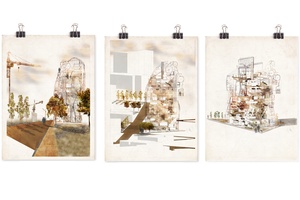
EC: I always used to love painting, but I’m not that great at it. I got in to the art [I do now] through university; it was through my Master’s thesis. I had an amazing supervisor who was quite “off the books”, as you would say, and really pushed me to keep creating even when I wasn’t sure what I was doing. From my thesis I ended up with large-scale models, and I cut sections through them as a way of applying an architectural technique to it. I started filling the sections with these worlds that were in response to the research I was doing. I was designing a hotel in Christchurch, so I was responding to the hotel as a typology and the needs of Christchurch post-earthquake.
The drawings were quite whimsical; they turned out really medieval, which was in response to some of the principles of the first architect of Canterbury. They were also looking at Christchurch and how to bring identity back to the city. That’s how the style came about. It worked with cogs and wheels and the ideas of moving and temporary-ness, which, back then, was a hot topic. People at that time in Christchurch really loved the temporary because they had to deal with things changing, the gap-filler type stuff happening, in all of the sites.
From that, I went in to a competition called the Parkin Prize. Chris Parkin, who used to own the Hippopotamus Museum Hotel, does a drawing competition and I was like, “Oh well, I’ll just enter it.” So, I composed a bunch of drawings from my thesis together and I submitted it. I didn’t win, but I was a finalist. We exhibited in a gallery and Chris Parkin actually bought my piece on opening night, which was pretty cool. I thought, “Woah, okay, maybe this could be a thing.”
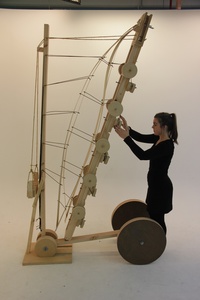
For about three years now I’ve just been, essentially, telling people’s stories. It’s become a narrative-type thing where people give me a list of their interests and stories of their lives and things that they’ve done, and I tell them through this medium. People don’t really know what to expect when they get it back, and it’s quite cool because they instantly connect with it. They see their house in there or there’s some kind of humour around a story about their kids. In architecture and art, looking deeper than what you first see is something that I want to compel people to do. It’s something I find interesting – not taking things at face value and really getting lost in things a little bit.
AC: How do you balance your professional architecture career with your art, which is essentially running a business now? It seems that the drawings have really taken off.
EC: It’s definitely taken off, which is really exciting. What’s challenging is that I’m equally passionate about both of them. But, in terms of balance…
AC: Maybe there isn’t much of a balance.
EC: I’m a really good planner, so I just make sure that when I need me-time or time with my mates, I just have to book it in. Time management is something I learned through architecture school, because you need it to get through. That’s how I balance.
When people receive these art works, it is really joyful for them. That’s why I’m doing it, to see them connect with the work. Last night I delivered a piece to a lady and she called and said, “I hope you can hear my smile.” It was so lovely. That’s kind of the reason that you do it. You have to look at why you do it. I don’t know if I have much of a balance though.
Architecture work always comes first, of course. Eventually, I would love to end up doing part time for both, because I would love to see the art move in a different direction or go further. So, giving some time to that would be cool.
AC: Have you put much effort in to marketing your art, or is it mostly word-of-mouth?
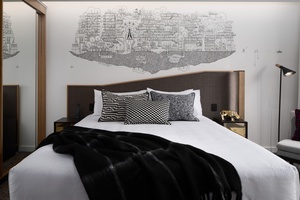
EC: More and more, I am. But, I’m gradually learning how to do it: even finding out simple things, like how to send your artwork safely. I love branding and marketing and typography. Recently, I’ve started doing some stickers for the packaging and a thank you card that usually I write a note on for each piece. And, I’ve got these tag labels that are on the back that say, “Your little piece of chaos”. I’m slowly working up my brand image so that it’s not just about the artwork, but it’s about how you unveil the artwork, how you experience getting art. I’m still learning, for sure.
I don’t really have the cash to put in to marketing so I’m really blessed that I’ve had some people reach out through Instagram. I’ve got an opportunity with a restaurant in Wellington soon where I’ll be doing a big mural on their wall, which is really exciting! I also did a mural for the QT Museum Hotel here in Wellington, and I got that work through a competition. Wellington is awesome for those kinds of opportunities because it really backs artists and the creative realm.
AC: How does your art feed in to the way that you design at work in architecture?
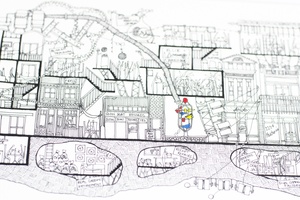
EC: They feed each other in different ways. As I mentioned before, a lot of the stuff that I focus on is narrative based. Even through university, it was very much a story-telling exercise. I would think, if I’m designing this building, how do I tell either the story of this place, or the story of the people that are coming to it, or the client? That’s how, ultimately, we connect with architecture and spaces: by actually looking at our experiences or the context and how you can respond to that. Everyone understands stories; everyone loves following narratives and, I think, it’s an easy way for people to connect with things.
AC: Tell us a bit about your journey after graduating university. You started at Studio Pacific Architecture (SPA), and now you’ve moved on to a smaller practice at Jerram Tocker Barron Architects (JTB).
EC: I was a part of one of Studio Pacific’s first grad evenings. It was a speed-dating event. There were maybe 11 of us, and we all had to go around and they had a bell and everything. I was at SPA for about three years. I cut my teeth on some pretty heavy projects there; it was awesome, but it definitely meant that I dove straight in to it.
My first project was the Nelson Air Traffic Control Tower, which was super technical. Air traffic control towers have to be really structured with where air traffic controllers vision lines are and everything. It was really interesting, and it was a design-build contract, which meant it happened very fast. So it’s already built, which is exciting, to be able to see that first building done. Then, I moved on to working on a building that isn’t going be built on Molesworth Street. I spent most of my time at SPA on that, but I learned a lot about the behind the scenes work. I did a lot of the client-consultant meetings to get them across the line with council, which is something that I don’t think many grads get to do, especially in big practices.
Coming in to JTB, it was funny because I’m working on more of the residential scale, and I felt like I didn’t know heaps about it. I’ve done a lot of alternative solutions and talking to consultants with commercial details, but what you would probably call ‘simple’ detailing, I hadn’t done before. I think the experience at Studio Pacific, where I was dealing with clients and consultants, really helped with my confidence and with being able to be direct.
AC: Now that you’ve done a bit of both commercial and residential work do you see yourself continuing on with one over the other? Have you enjoyed one more?
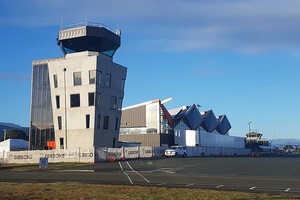
EC: I can’t say I’ve enjoyed one more than the other. I think I’ve still got quite a bit more to learn on residential. I would probably sway more towards commercial. Purely because of the nature of it, that more than one person or one family gets to experience it. There’s a special part of residential within that fact, that you are tailoring it to this family personally. But, with commercial, there is a challenge in how you make people respond to this building from all demographics and all shapes and sizes and all places. I really like that challenge because it’s not just thinking about what I like as a design and what I want to do.
I love learning about people as well. As architects, we love architecture and spatial experiences, but we really want other people to love it as well. It’s about creating a sense of place for people so that they can feel a sense of belonging or excitement. I also worked in hospitality for many years through university, and I love wine and good food, so I’d love to get the opportunity to do some hospitality-type work. I feel like I know how the mechanics of it works quite well, but also, I think you can do some really cool artistic or different things and get away with it.
AC: What have been some of the challenges that you’ve faced coming in to professional practice as a graduate? And what have been some of the best moments of working?
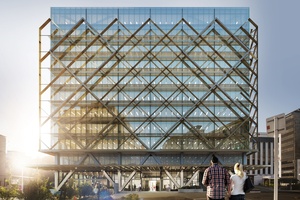
EC: There have been quite a few challenges, naturally, in those first three years. When you come out of university all of your ideas are from your heart. You just feel so much about what you’re designing and the ideas you’re pitching. I think the challenge is to, first, take feedback on the chin and also know that it’s not a personal attack on you; it’s really looking at your ideas as more of a cycle. You’ve got to keep going and not think that the first idea that you had is the best idea ever. Another challenge was also learning how to pitch those ideas to your client and to your team and council in a way that they understood and was also actually viable – bringing it back down to earth a little bit.
As for high moments, seeing the [Nelson Airport Control] Tower built was really, really awesome. It’s one of those moments where you think, “I drew that on paper, and there it is.” There’s also the little wins: it’s quite energising to be in a meeting with about 20 people and be talking about your design and have a structural engineer and a mechanical engineer all feeding in and really understanding what you want to do and making it happen. I think that’s really exciting, because you’re all there for one common thing.
AC: What’s it been like working in Wellington?
EC: I think Wellington is awesome and challenging because it’s such a diverse place in terms of character. You go to different districts and there are very different building characters. You’re going from a commercial district to a parliamentary precinct to retail to residential, all within the space of a few streets; they’re not segregated much. In that sense, I think designing buildings in Wellington can be hard, because you’ve got four neighbours, each of different types. So, responding to each of those can be difficult as you can’t necessarily have a different façade on each side that responds to all of them. I think that’s a real challenge. You also want to keep that fun, unique vibe that Wellington has. You want to keep with it but also modernise it in an interesting way. That’s where I really, truly believe that art can feed in to it.
AC: Do you do a lot of hand drawing at work? I imagine your hand would get tired if you had to draw all day at work and then go home and hand draw your artworks.
EC: I’m obviously a big advocate of hand drawing. I think it’s really good to take yourself away from the computer and use it as a technique. Often, when I was at Studio Pacific, I would take myself to a different spot and, when I was in the concept stage especially, I would just start drawing. Even if it’s terrible, you just start drawing, and from that form will come something else. Ultimately, that’s how my thesis has come about and my art.
AC: What are your goals for the future with both your architecture and your art? Are you working towards registration?
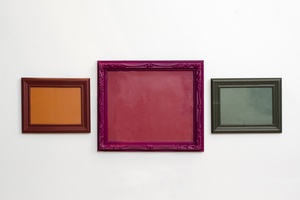
EC: Yes, definitely working towards registration. Like I mentioned before in architecture, I really want to do some hospitality work and maybe a bit more small-scale commercial. With art, I have a massive dream: I’d love to do a big mural on the side of a building because I think it would look really great. I don’t know how it would happen, so that’s a big dream of mine. I’m not projecting forward too much as I know plans can be change very quickly – in a good way. So, I’m just going with it at this stage. We’ll see what opportunities come up.
AC: Lastly, as part of our On the Rise series, we as participants to create a mood board using Resene colours and products. Tell us about what you’ve created.
EC: I am often challenged by art and architecture that, at first glance, sometimes seems clashed together – I loved these colours because they were seasonal and when put together, they became edgier, almost clashing.
I chose to express the colours through frames due to my love of art, but also I think that it is not often we look to the frame itself as the art. I wanted to use this mood board to provoke people to look deeper than what they first see, looking to the context – the frame – and the detail and interest that may lie there instead of in the picture. I wanted to pose a different question to people, asking what they are looking at. This is a concept I am passionate about in my art and architecture career.
Learn more about Ellie’s artwork at elliecompton.com.
Catch up on all the other interviews in the Resene On the Rise series here.

